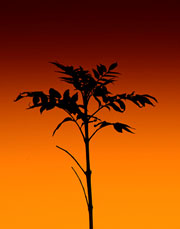>
Surveyors Urged To Take Practical Measures to Mitigate Impact of Ash Dieback
 Ash dieback is posing a serious health risk to the UK’s ash tree population after contamination from overseas imports. Although the first confirmed cases were reported as early as last year, it’s only now that as surveyors, we’re beginning to recognise the desperate need to act fast to minimise the effects of this destructive disease.
Ash dieback is posing a serious health risk to the UK’s ash tree population after contamination from overseas imports. Although the first confirmed cases were reported as early as last year, it’s only now that as surveyors, we’re beginning to recognise the desperate need to act fast to minimise the effects of this destructive disease.
Caused by a fungus called Chalara fraxinea, ash dieback infects new shoots, destroying living cells beneath the bark, causing the leaves and fresh shoots to shrivel and die. This eventually results in the death of the ash tree over a number of years. As there is no permanent cure, the government estimates that around 90% of our ash tree population could be lost – a massive figure for what has become a pivotal feature of a great deal of woodland areas and rural communities, with an estimated 80 million ash trees in the UK.
Management Strategies
In the long term, the likelihood is that the majority of ash trees will be lost to this disease; however it’s important for surveyors to set up management strategies to mitigate the effects of ash dieback. Ash trees provide an attractive green backdrop in a range of urban and rural settings, so their preservation for as long as possible. Although there may not be an immediate cure, there are fungicide named Signum available which prolong the life of the tree and allow the housing area to maintain its idyllic character.
As surveyors, we need to establish whether or not the specific ash tree is worth saving. Unfortunately it will be near enough impossible to inject each and every diseased tree with the necessary fungicide, so in order to determine which trees are most likely to require treatment, the following considerations need to made…
Assess the Location
Is there a high level of occupancy in the area? If so, the ash trees may be an important characteristic of the neighbourhood, and should therefore be treated accordingly. Areas of low occupancy need not be visited or checked, as such features are unlikely to play as much of an important role into property values.
Visual Checks
If you’re looking at an area with high occupancy, then a visit should be considered to visually check and monitor the ash trees in the area. A person with a good amount of background knowledge in trees and similar types of flora should be elected to carry out the checks to see which trees are suffering, and which are vulnerable.
Applying Treatment
If or when you notice that a tree in the vicinity of the area you are checking is affected, then a more detailed inspection by a trained professional is more appropriate. Specialist knowledge would be key, as well as knowledge into future treatment to prevent rapid degradation.
It isn’t just the visual aspects of an area that ash tree disease and degradation affects. Over time dead trees can become a serious safety hazard due to the increasing risks of falls and collapses. For this reason a risk assessment should also be carried out, especially if the disease has developed and the tree no longer possesses life.




